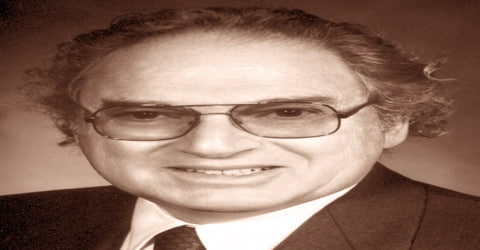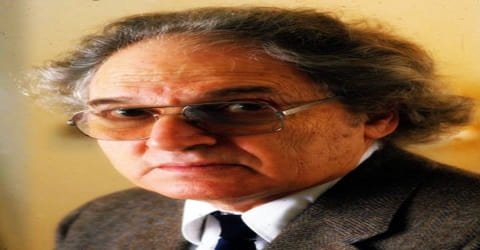Biography of Herbert A. Hauptman
Herbert A. Hauptman – American mathematician and Nobel laureate.
Name: Herbert Aaron Hauptman
Date of Birth: February 14, 1917
Place of Birth: New York City, New York, United States
Date of Death: October 23, 2011 (aged 94)
Place of Death: Buffalo, New York, United States
Occupation: Mathematician
Father: Israel Hauptman
Mother: Leah Rosenfeld
Spouse/Ex: Edith Citrynell (m. 1940)
Children: 2
Early Life

An American mathematician and crystallographer who, along with Jerome Karle, received the Nobel Prize for Chemistry in 1985, Herbert A. Hauptman was born on February 14, 1917, into a Jewish family in New York City, New York, U.S. the oldest child of a Leah (Rosenfeld) and Israel Hauptman. He pioneered and developed a mathematical method that has changed the whole field of chemistry and opened a new era in research in the determination of molecular structures of crystallized materials.
Interested in mathematics and science as a child, Hauptman later took up a Bachelor’s degree in Mathematics from the City College of New York and an M. A. degree in mathematics from Columbia University. He completed his Ph.D. in mathematics from the University of Maryland and subsequently began working with chemist Jerome Karle on X-Ray crystallography. His knowledge in mathematics and Jerome Karle’s expertise in physical chemistry enabled them to identify the issues associated with X-Ray crystallography, introduce probabilistic methods and deduce mathematical equations while working on understanding the molecular structure. Hauptman and Jerome Karle won the Nobel Prize in Chemistry in 1985 for the ‘development of direct methods for the determination of crystal structures’. Hauptman later continued his research as part of the crystallographic group of the Medical Foundation of Buffalo where he took up a role as research director and President. He also taught at the Department of Computer Science and Biophysical Sciences in the University of Buffalo. Over his career, he authored over 170 publications in the form of journals, papers, articles, books, and chapters.
Today, Hauptman’s direct methods, which he continued to improve and refine, are routinely used to solve complicated structures. It was the application of this mathematical method to a wide variety of chemical structures that led the Royal Swedish Academy of Sciences to name Hauptman and Jerome Karle recipients of the 1985 Nobel Prize in Chemistry.
Childhood, Family and Educational Life

Herbert A. Hauptman, in full Herbert Aaron Hauptman, was born on 14 February 1917, at New York City, New York, U.S. He was the oldest child of Jewish couple Leah (Rosenfeld) and Israel Hauptman.
Hauptman was interested in science and mathematics from an early age which he pursued at Townsend Harris High School, graduated from the City College of New York (1937) and obtained an M.A. degree in mathematics from Columbia University in 1939. After the war, he started a collaboration with Jerome Karle at the Naval Research Laboratory in Washington, D.C. and at the same time enrolled in the Ph.D. program at the University of Maryland, College Park. He received his Ph.D. from the University of Maryland in 1955 in physics, which is part of the University of Maryland College of Computer, Mathematical, and Natural Sciences. By 1955 he had received his Ph.D. in mathematics.
Hauptman credits his parents for playing an integral role in his development as a scientist because they gave him the choice to study whatever he wanted. Early on, science caught his eye, and he devoured every scientific book he could find. “My interest in most areas of science and mathematics began at an early age, as soon as I had learned to read, and continues to this day,” Hauptman said in his 1985 Nobel acceptance speech.
Personal Life
Herbert A. Hauptman married Edith Citrynell in 1940 and the couple had two daughters; Barbara (born in 1947) and Carol (born in 1950).
When he is not working, Hauptman listens to classical music, and in his spare time designs geometric-patterned stained glass. He also swims nearly every day.
Career and Works

Herbert A. Hauptman was a classmate with Karle at City College of New York, from which they both graduated in 1937. Hauptman went on to study mathematics further at Columbia University (M.A., 1939) and at the University of Maryland (Ph.D., 1955). After World War II Hauptman was reunited with Karle at the Naval Research Laboratory (Washington, D.C.), where they began collaborating on the study of crystal structures.
Together, they focused on X-ray crystallography, to derive a 3D structure of a molecule by studying the pattern of scattering of a beam of X-Ray through a crystal form of the molecule. The method of X-ray crystallography had several limitations as scientists could not do more than predict the structure of the molecule which had to be confirmed by further investigation. Along with Jerome Karle, Hauptman utilized probability theory to understand the light patterns on the X-Ray film, computed the angles at which X-ray beams were diverted as they went past the electrons surrounding the atom nucleus. These observations led to the development of equations that enabled to accurately determine the position of atoms.
Their 1953 monograph, “Solution of the Phase Problem I. The Centrosymmetric Crystal”, contained the main ideas, the most important of which was the introduction of probabilistic methods through development of the Sayre equation.
By 1954 Hauptman had studied the problem for five years and had presented 13 scientific papers on molecular structure determination, yet hardly anyone supported his ideas. “There was a lot of resistance to it, mostly because it wasn’t understood,” Hauptman explained to New York Times writer John Noble Wilford. “It was highly mathematical and crystallographers didn’t have the training to understand it. It was not generally accepted until the middle 1960s or so when more and more people began to use it.” By 1965 Hauptman was head of the NRL’s mathematical physics branch and began a collaboration on steroids with the Medical Foundation of Buffalo, which eventually lured him to their offices.
In 1970 Hauptman became a professor of biophysics at the State University of New York at Buffalo and joined the Medical Foundation of Buffalo (renamed in 1994 the Hauptman-Woodward Medical Research Institute), later serving as research director and president. During the early years of this period, he formulated the neighborhood principle and extension concept. These theories were further developed during the following decades.
Hauptman in 1988 took on the role of President and maintained the role until his death. He also worked as Research Professor in the Department of Biophysical Sciences and Adjunct Professor in the Department of Computer Science at the University at Buffalo. He continued his study on issues in crystallography and towards the 1980s shifted his attention to the study of larger molecules. He was known to have written more than 170 publications in the form of papers, books, journals, and articles.
Hauptman and Karle devised mathematical equations to extract phase information from the intensity of spots resulting from the diffraction of X-rays deflected off crystals. Their equations made it possible to pinpoint the location of atoms within the crystal’s molecules based upon an analysis of the intensity of the spots. Their method was neglected for a number of years after its publication in about 1949, but gradually crystallographers began using it to determine the three-dimensional structure of thousands of small biological molecules, including those of many hormones, vitamins, and antibiotics. Before Hauptman and Karle developed their method, it took about two years to deduce the structure of a simple biological molecule, but by the 1980s, using powerful computers to perform the complex calculations needed, one could do it in about two days.
Although well past retirement age, Hauptman continued his work as a research professor at the State University of New York at Buffalo and also at the research institute, which expanded its state-of-the-art research laboratory in 2003. Though some of the institute’s work has gone unnoticed, Hauptman remained unfazed.
Awards and Honor
Herbert A. Hauptman was awarded the Belden Prize in Mathematics by the City College of New York in 1935.
In 1984 Hauptman jointly received the Patterson Award by American Crystallography Association in Lexington.
Herbert A. Hauptman and Jerom Karle were jointly awarded the 1985 Nobel Prize in Chemistry.
Hauptman was inducted into the Townsend Harris Hall of fame in 1989.
In 1991, Hauptman was awarded the Dirac Medal for the Advancement of Theoretical Physics by the University of New South Wales, Australia.
Death and Legacy
Herbert A. Hauptman died on 23rd October 2011 at Buffalo, New York, after suffering a stroke, at the age of 94.
Hauptman was a mathematician who worked on revolutionary methods to identify molecular structure utilizing X-ray crystallography. His works had a positive impact on subsequent research in modern chemistry as well as the pharmaceutical industry.
Hauptman was among the 22 Nobel laureates to sign the 2003 Humanist Manifesto by the American Humanist Association. He was a member of prestigious professional societies like Jewish Academy of Arts and Sciences, U.S. National Academy of Sciences, Philosophical Society of Washington and Association of Independent Research Institutes.
Information Source:
















